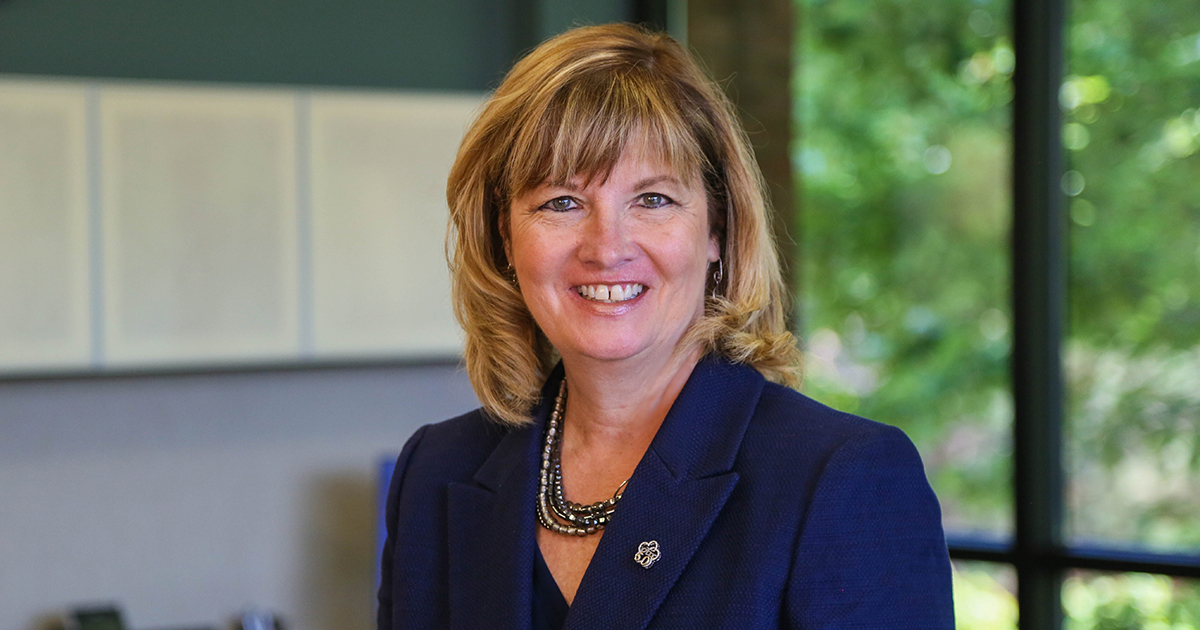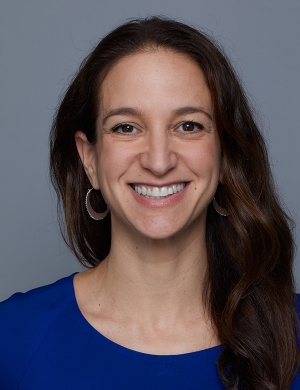Replicating CUNY’s ASAP Model in Ohio: Interview with Dr. Marcia Ballinger

Nationwide, only 25 percent of full-time, first-time students at community colleges earn a degree within three years. To increase graduation rates for low-income community college students, the City University of New York (CUNY) launched Accelerated Study in Associate Programs (ASAP) — a comprehensive program that provides wrap-around support services to students, including one-on-one advising, help covering transportation and book expenses, and tutoring.
MDRC’s evaluation of the CUNY ASAP model found that the program doubled graduation rates in New York City. Three community colleges in Ohio successfully replicated the ASAP model as part of the ASAP Ohio Demonstration, and MDRC’s evaluation found positive results in line with those at CUNY.
In this episode, Katie Beal talks with Dr. Marcia Ballinger, President of Lorain County Community College in Elyria, Ohio, about the demonstration and what it takes to scale a comprehensive program like ASAP.
View Transcript
Katie Beal, Host: Graduation rates for community college students have remained low for decades. Nationwide only 25 percent of community college students earn a degree within three years. In an effort to increase graduation rates for low-income community college students, the City University of New York (CUNY) launched Accelerated Study in Associate Programs, or ASAP. It’s a comprehensive program that provides students with up to three years of wraparound supports, including one-on-one advising, tutoring, and covering transportation and book expenses. MDRC’s evaluation of the CUNY ASAP program found that it doubled graduation rates in New York City. Three community colleges in Ohio successfully replicated the ASAP model as part of the Ohio ASAP Demonstration, and MDRC’s evaluation found positive effects in line with those at CUNY.
Lorain County Community College in Elyria, Ohio, was one of the three colleges in the demonstration, and it has committed to scaling the program collegewide. To learn more about Lorain’s involvement in the demonstration and how they have been able to scale and financially sustain a comprehensive program like ASAP, I spoke with Lorain president Dr. Marcia Ballinger.
Thanks so much for joining me today, Dr. Ballinger. Lorain was one of the three colleges in the ASAP Ohio Demonstration. What interested you in being a part of the demonstration?
Dr. Marcia Ballinger, President of Lorain County Community College: When we were approached about the opportunity for Lorain County Community College to be part of the ASAP demonstration and to determine whether we could replicate the model and the results that CUNY had experienced, I was really excited about that because the CUNY model is one that I have followed for quite some time and thought that it would be one that could potentially work at Lorain County Community College, particularly given the agenda and focus that we have had since 2011 on raising our completion rates. But more importantly, as we look at it from a socioeconomic mobility perspective, we knew we needed to get more students to the finish line quicker and to be able to have a model that would be much more integrated and holistic. And the populations that the CUNY model focused on really mirror our largest core areas of Lorain and Elyria — low-income, first-generation students who are placing in developmental education. So we were eager and delighted to then be selected as part of the demonstration.
Beal: That’s great. As part of the demonstration, Lorain implemented Students Accelerating in Learning, or SAIL, which is modeled after the ASAP program. And MDRC’s evaluation found that the program is substantially increasing graduation rates for low-income students. What do you think makes the program so effective?
Dr. Ballinger: I don't think there's one particular aspect; it is the holistic model. But when I talk to students — and I've met and talked to so many over the past several years — there is one overarching characteristic that they will share with you. They would say it is that personalized adviser that they have, who really has created that personal relationship with them, who cares about their success, and they know they can reach out to at any time. And, of course, that's intricately woven with the other characteristics of the program, like the financial incentives and the tutoring.
Beal: So can you give me an example of a student who was successful because of the SAIL program?
Dr. Ballinger: I’ll give an example of a student who I think truly exemplifies why the program was created. Prior to becoming a SAIL student a few years ago, she had no choice but to just work outside the home, as many mothers of young children do. And she never thought that she would become an engineer but always had that sort of residing inside of her. But she worked in clerical positions and, you know, really grew unhappy with regard to low wages and not having a career path.
And her daughter would go to summer camps at NASA. And so she started to engage as a parent helper during that and then had this dream to become a mechanical engineer. But she thought that it wasn't something for her. Right? It wasn't something that she would be able to do at the age of 44.
And you know, not having gone to college before, she wasn't sure how she would fit in. Where would she get the money? How would she even begin taking classes? And she actually talked about how she was too afraid to make an appointment, but then the realization was that it was now or never.
So after she had enrolled at Lorain, she heard about this SAIL program and she was accepted and completed two associate degrees and two industry-recognized credentials in addition to that, all within three years. The benefits of the program and having the book vouchers and the gift cards for gas really reduced the stress that she had. And because we connect so deliberately with employers as part of the process as well, she landed an internship then with NASA and now she's a full-time employee with them.
Beal: Wow, that’s really great. So Lorain has committed to scaling the SAIL program to serve additional students and to sustaining it long term. How did you come to this decision?
Dr. Ballinger: You know the decision was right in front of us. It was not a difficult decision if you place students in the middle of the decision-making. Right? We saw the results as we were going through this: we have students who are graduating at over 40 percent rate within three years, versus what it had been at 15 percent. And so, you know, when you see that kind of tremendous gain, it is about the students. And seeing that as a moral imperative to make those changes. And so it became one of, "now, how will we design it to scale it?" versus, "should we scale it?"
Beal: Tell me more about what the college had to do in order to scale the SAIL program?
Dr. Ballinger: It’s been a redesign of systems for us across the college. An important area of the redesign work happened within our academic advising and being able to create the focus for those advisers only on the SAIL students. So freeing up resources by doing things on the operations side versus the student success side of operations — things like renegotiating contracts for utilities and energy and looking at debt and bonds that are out there and how do you refinance that? Is there a lower interest rate so that you can free up other dollars?
So digging deep into those kinds of things and then redirecting some of that to where it matters most and that's on the student side of the equation.
Beal: Lorain has clearly been able to do a lot with this program. One thing you hear about some of these programs though, like SAIL and CUNY ASAP, is that they are expensive. How is Lorain planning to sustain it financially?
Dr. Ballinger: Right. While it may significantly increase program costs, we have worked with Social Finance at a national level to look at what are some of the kinds of offsets to that or ways to think about it.
So, when students are graduating and hitting the marks that they need to, we receive funding from the state of Ohio through what is called our State Share of Instruction. And, it's a performance-based model. So, the enrollment is the foundation, but then it's, you know, are they graduating within a certain amount of time? Have they accumulated the 12, 24, 36 credit hours? Have they completed developmental math and English and gateway courses within that first year? Have they received an industry-recognized credential? You put all that together and, if students are successful in SAIL and they're doing it in three years instead of six years, then there's a return on that in terms of performance funding.
Then I think there are those other values that we have to look at as an institution and those are the return to the state and federal government. When individuals have degrees and they're meaningfully employed, there's a decrease in healthcare costs, criminal justice system, and welfare utilization while, at the same time, increased tax revenue.
And the other is truly the value to the students, the graduates and the community then, through their increased earnings and economic impact on the community overall. So, it's a leadership decision and conversation that is to be able to look at it from that 30,000-foot view and to then make the shift that needs to happen for that sustainability.
Beal: That’s great. What is your advice to other colleges that may be interested in implementing and scaling a program like SAIL?
Dr. Ballinger: Right. So my advice is that when you start examining your institutional data on outcomes and there’s data suggesting that there is a huge gain from this, don’t think too narrowly about it from the delivery-cost perspective but think about it with regard to how many lives are going to be changed and families and their economic mobility trajectory and what that means versus it's a more expensive model. And then, you know, engaging your team and what can we do differently to redesign ourselves to make this program a cornerstone?
Beal: It sounds like you’re saying that tinkering on the edges may not lead to the kind of wide-scale change you’re looking to achieve.
Dr. Ballinger: That's right. You know, if you're viewing this as a boutique, one-off program because there's either grant funding associated with it or something that you try for one small group, it's not going to make the impact. And, it's been tested. I mean CUNY ASAP has had so much research evaluation demonstrating its impact. Now that MDRC has evaluated it in Ohio, the results can be achieved. But it takes that larger commitment to make it part of the fabric of the institution, not a boutique program that sits in an office someplace else.
Beal: Thanks to Dr. Ballinger for joining me. A report with three-year findings will be released later this year. Visit mdrc.org to learn more about the ASAP Ohio Demonstration. And if you’re a college interested in replicating the ASAP model, you can reach out to CUNY ASAP, which partners with colleges to implement the ASAP model.
About Evidence First
Policymakers talk about solutions, but which ones really work? MDRC’s Evidence First podcast features experts—program administrators, policymakers, and researchers—talking about the best evidence available on education and social programs that serve people with low incomes.
About Leigh Parise
 Evidence First host Leigh Parise plays a lead role in MDRC’s education-focused program-development efforts and conducts mixed-methods education research. More
Evidence First host Leigh Parise plays a lead role in MDRC’s education-focused program-development efforts and conducts mixed-methods education research. More





